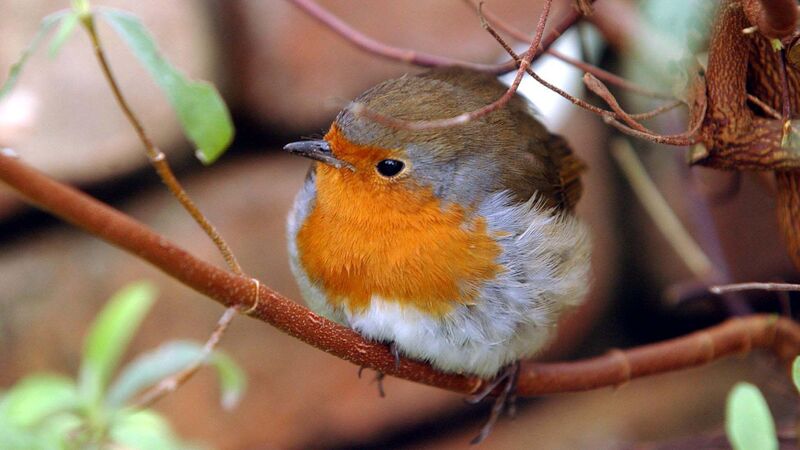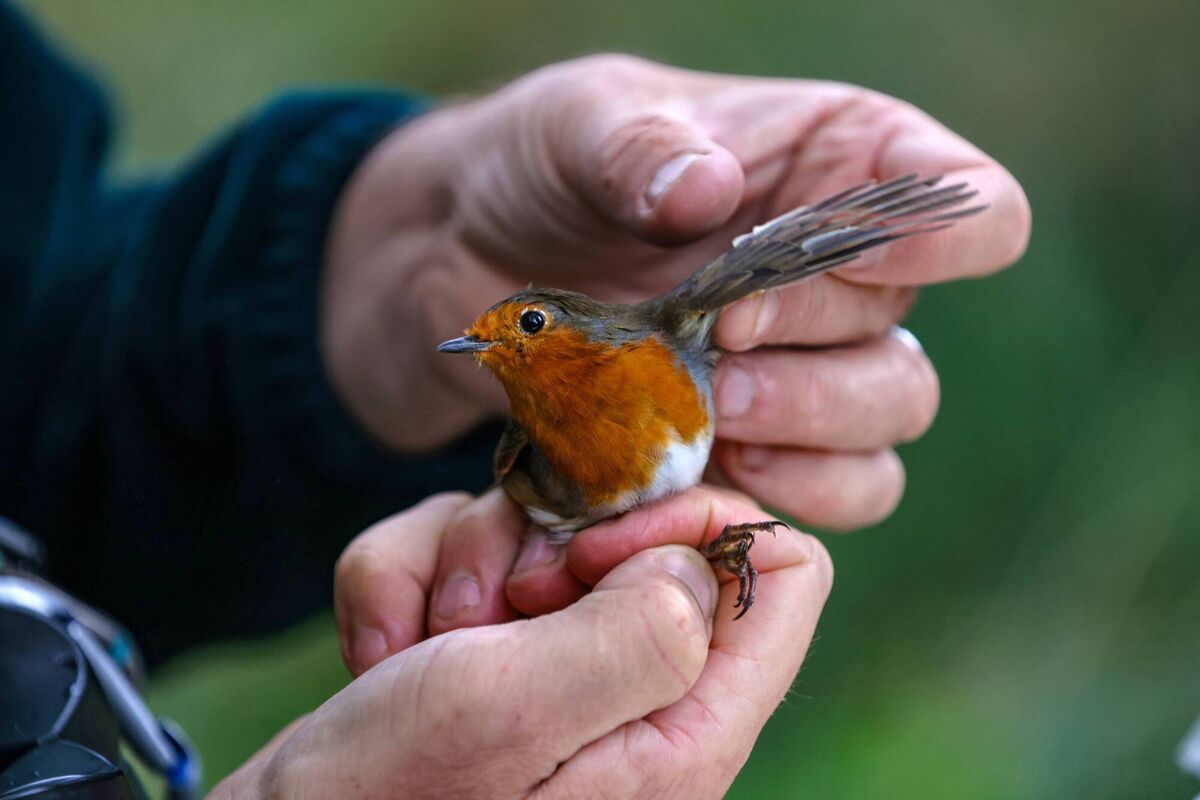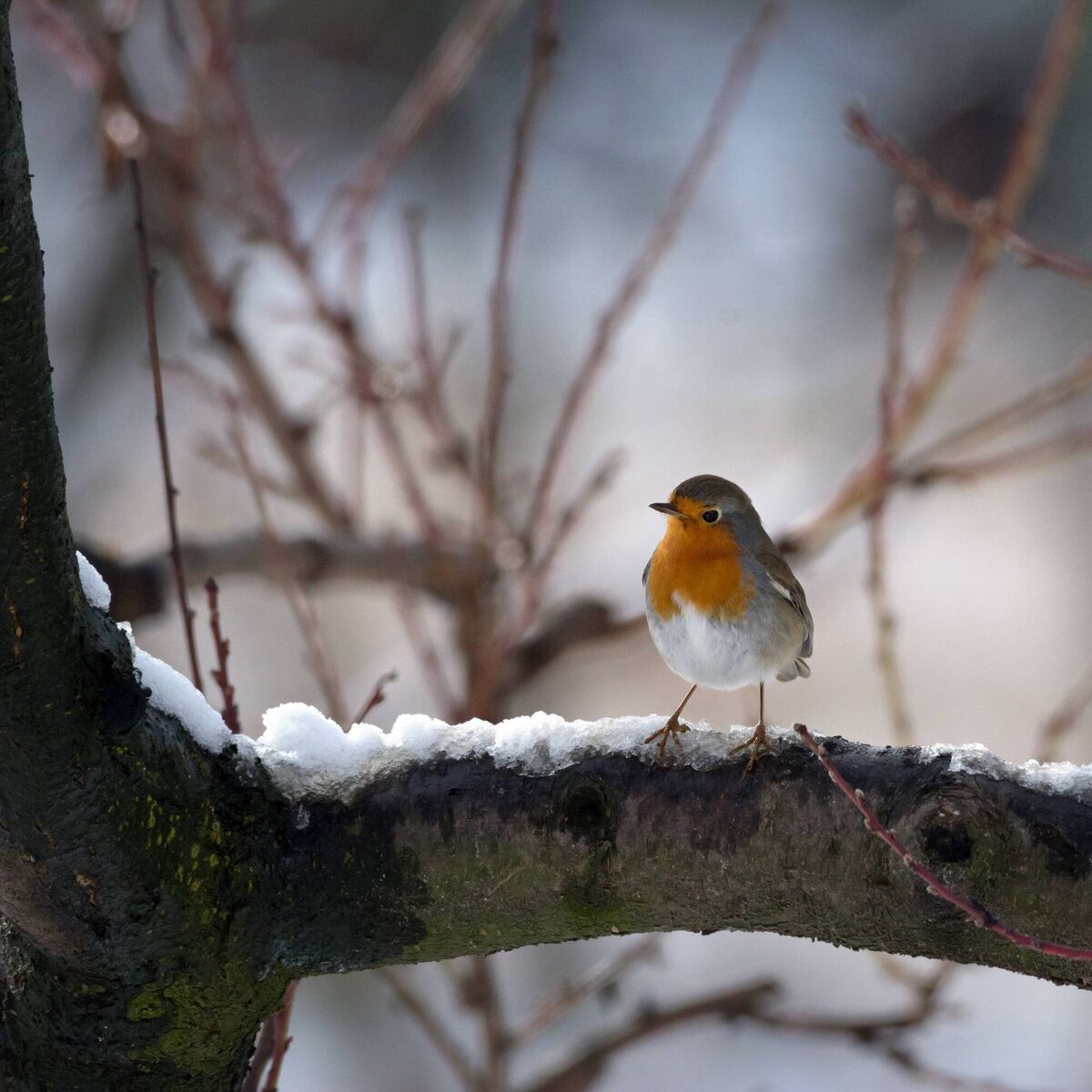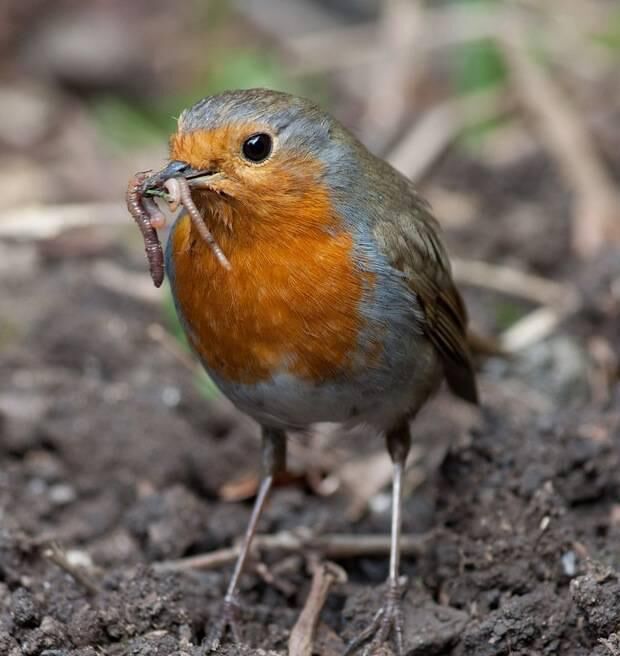Winter is a robin's time to shine — and sing out

A Robin keeps an eye on things from its garden perch in Blackrock, Cork. Picture: Dan Linehan
The robin has such a strong association with Christmas. It adorns Christmas cards and wrapping paper, while artificial robins hang from Christmas trees and perch on Christmas cakes.
One reason is probably because the robin is one of the only birds that sings during winter.
Most male birds sing in the breeding season in spring, and singing is a very important way to tell other birds you are fit, healthy, have some nice real estate, and are ready to mingle. The robin is very territorial and holds its territory throughout the winter, therefore it must sing to mark out and defend his patch.
Another reason the robin is chosen for a friendly-looking Christmas emblem is because they are notoriously tame. They are known to hop through an open door in search of crumbs, follow gardeners around (in the hope of benefiting from the digging of soil and upturned worms), and even to take food from your hand.
The robin has often been suggested as the national bird of Ireland due to this tameness and its cheery demeanour. The Irish name for the Robin is ‘Spideog’ and the spideog features in many Irish legends and myths.

The robin became associated with offering comfort to the wounded, and it was believed it showed respect to the dead by covering them with leaves. Of course, there are also many stories connecting the robin with Christ, giving it a special link with Christmas.
People believed the robin’s red breast resulted from how it tried to help Jesus. One story is that when Jesus was on the cross, a robin pulled a thorn from his crown, but a drop of Christ’s blood stained his breast red for evermore. Another tells how its breast became stained with Christ’s blood as it tried to stop the bleeding from his wounds by covering them with moss and leaves. In yet another story, as Jesus was being chased by soldiers, he left a trail of blood as he passed through a field of wheat, but the robin followed him and lay its breast on every drop so as to cover his tracks.

Resulting from these and many other stories of the robin’s good deeds, it was considered a very bad idea to kill a robin or steal its eggs. You could be cursed with pain, a broken leg, or even death. On the other hand, its association with bravery meant the poor robin could be killed as part of an old cure for depression. This treatment involved a robin’s heart being cut out and sewn into a pouch, which would be worn around the neck of the depressed person.
The robin’s apparent bravery around humans has made them appear ‘friendly’ and has led to many stories and folklore surrounding this bird. There is a lovely collection of interviews with the older generation, produced by Michael Fortune on Youtube (for example: youtube.com/watch?v=K7pTYgR0HUs) which detail some of this folklore. Some say the robin is a bad omen, while others say the robin brings good luck and messages from loved ones who have passed away.
The negative tales include the belief that if a robin taps on your window three times, it is a warning of a death in the household. If a robin comes inside your house, it brings bad luck, and is often linked with an impending death in the house. But if you hunt a robin out of your house, you have no luck for the rest of the year.
Because many older people were afraid of the robin visiting, if one did appear in their house, they would get out the holy water and sprinkle it about. People even used to go as far as getting the house blessed by a priest after a robin’s visit.

Then there are also many positive stories, when a robin brings joy and can even instill hope and faith in the afterlife. In many parts of the country, it was seen as very good luck when a robin chooses to enter your home. There are many tales of these visits occurring just after someone has died. When my own sister died in 2008, my parents began to have regular visits from a robin who would nonchalantly hop into their kitchen, and they took great solace from that little bird. Sure, it may have just been a cheeky, hungry bird who was simply looking for food, but they took it as a nice little message from their daughter. It would even land on my Dad’s hand to feed on oat flakes and brought some small joy at a difficult time.
Whatever its origins, the robin has become a firm fixture in our Christmas traditions and has a special place in Irish hearts. And if I didn’t have two big dogs in my kitchen ready to pounce, I would welcome a visit any time from this precocious little bird.
To find out more about the myths and legends surrounding the robin, see Niall MacCoitir’s excellent book (The Collins Press).
- Juanita Browne has written a number of wildlife books, including and .








